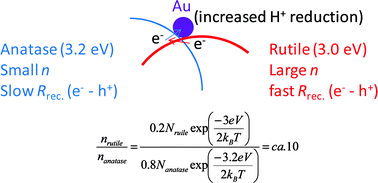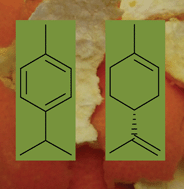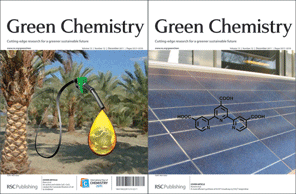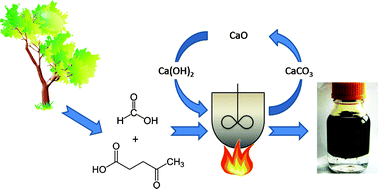This month sees the following articles in Green Chemistry that are in the top ten most accessed:-
Recent advances in ionic liquid catalysis
Qinghua Zhang, Shiguo Zhang and Youquan Deng
Green Chem., 2011, Advance Article, DOI: 10.1039/C1GC15334J
Continuous flow reactors: a perspective
Qinghua Zhang, Shiguo Zhang and Youquan Deng
Green Chem., 2011, 13, 2619-2637, DOI: 10.1039/C1GC15334J
Industrial biotechnology – the future of green chemistry?
Stefanie Wenda, Sabine Illner, Annett Mell and Udo Kragl
Green Chem., 2011, 13, 3007-3047, DOI: 10.1039/C1GC15579B
l-Proline catalysed multicomponent synthesis of 3-amino alkylated indoles via a Mannich-type reaction under solvent-free conditions
Atul Kumar, Maneesh Kumar Gupta and Mukesh Kumar
Green Chem., 2012, Advance Article, DOI: 10.1039/C1GC16297G
Environmentally benign synthesis of heterocyclic compounds by combined microwave-assisted heterogeneous catalytic approaches?
Arif Daştan, Aditya Kulkarni and Béla Török
Green Chem., 2012, Advance Article, DOI: 10.1039/C1GC15837F
A critical review on recent methods used for economically viable and eco-friendly development of microalgae as a potential feedstock for synthesis of biodiesel
Yogesh C. Sharma, Bhaskar Singh and John Korstad
Green Chem., 2011, 13, 2993-3006, DOI: 10.1039/C1GC15535K
Synthesis and properties of trialkyl(2,3-dihydroxypropyl)phosphonium salts, a new class of hydrophilic and hydrophobic glyceryl-functionalized ILs
Fabio Bellina, Cinzia Chiappe and Marco Lessi
Green Chem., 2012, Advance Article, DOI: 10.1039/C1GC16035D
A magnetic nanoparticle supported dual acidic ionic liquid: a ‘quasi-homogeneous’ catalyst for the one-pot synthesis of benzoxanthenes
Qiang Zhang, Hong Su, Jun Luo and Yunyang Wei
Green Chem., 2012, Advance Article, DOI: 10.1039/C1GC16031A
Aqueous and biphasic nitrile hydration catalyzed by a recyclable Ru(ii) complex under atmospheric conditions
Wei-Chih Lee and Brian J. Frost
Green Chem., 2012, Advance Article, DOI: 10.1039/C1GC15950J
Syntheses of cyclic carbonates with amidinium halide catalysts in reusable, reversible, room-temperature ionic liquids or acetonitrile
Tao Yu and Richard G. Weiss
Green Chem., 2012, Advance Article, DOI: 10.1039/C1GC16027C
Why not take a look at the articles today and blog your thoughts and comments below.
Fancy submitting an article to Green Chemistry? Then why not submit to us today or alternatively email us your suggestions.











 Anett Schallmey and Bruno Bühler,
Anett Schallmey and Bruno Bühler,  Use of carbon dioxide in chemical syntheses via a lactone intermediate
Use of carbon dioxide in chemical syntheses via a lactone intermediate


